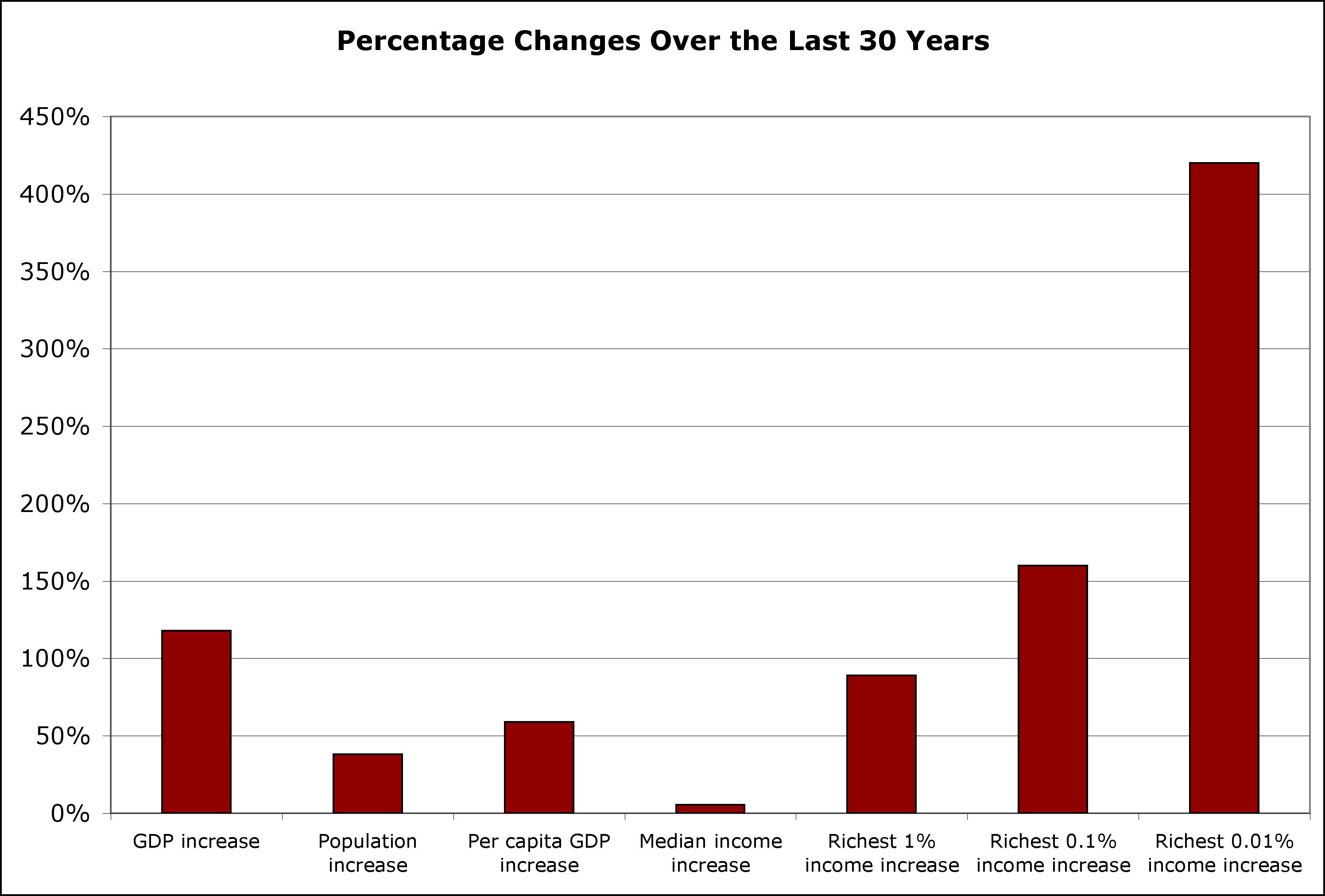With mammoth student protests in Montreal on May 22 (The Globe and Mail reported up to 250,000; CTV news reported 400,000), smaller protests in other parts of Quebec, and sympathetic marches in centers such as Calgary, Halifax, Toronto, Vancouver, New York and Paris, the attention of Canadians — and many across the globe — are turning to Quebec.
Trade unions are contributing to the province’s student federations (FECQ, FEUQ, and CLASSE) and the Occupy Montreal movement has joined the protests. Both Montreal Mayor Gerald Tremblay and Parti Quebecois leader Pauline Marois have said that the government must reopen negotiations. Fighting fire with petrol, Premier Jean Charest’s government passed Bill 78, which contains a number of restrictive measures related to the protests and the student federations, thereby succeeding in inflaming passions further. A Léger Marketing poll found that 78 per cent of Quebecois believe the government has gone too far with Bill 78, and 76 per cent want the government to resume negotiations with the students. Lawyers for the student federations are preparing to challenge the constitutionality of Bill 78, which they feel violates freedoms of expression and association guaranteed by the Canadian Charter of Rights and Freedoms. The Quebec Bar Association and the Quebec Human Rights Commission are equally concerned and have announced that they will investigate “all cases of discrimination” arising from the application of the law.
With all this attention has also come a flurry of criticism of the student federations. It’s not my intention to survey or summarize these, but simply to dissect one current within it to illustrate an underlying issue, and how the critique is attempting to pigeonhole the student movement and its objectives into a form where it can be dismissed, or at least isolated. Margaret Wente’s essay Tuition protesters are the Greeks of Canada published May 19, 2012 in The Globe and Mail is one illustration. Wente fires several salvos in the direction of the protesters, but the central economic one which interests me is her contention that the Quebec socio-economic model “maxed out a while ago” and that the resistance to the tuition hikes (which Wente points out would still leave Quebec students with the lowest tuition rates in North America) stems from an “entitlement mentality.” As a result, she claims, “the rest of Canada looks on, appalled.”
Maxed out greed
Here’s the problem with Wente’s analysis: what has “maxed out” is actually greed. In the last generation (i.e., 30 years) Canada’s adjusted GDP has more than doubled, from $330 billion in 1980 to over $720 billion in 2009, an increase of 118 per cent (adjusted for inflation, in constant 2009 USD; World Bank data). There is much more money in Canada. During that time period the Canadian population increased 38 per cent from 24.51 million to 33.89 million. So, Canada’s adjusted GDP has grown 3.1 times faster than the population.
Therefore, things which were affordable in 1980 in Canadian society should be far more affordable today with so much extra wealth sloshing around in the country and only a modest increase in population. Are they? It seems not.

The median wage of Canadians has increased only 5.4 per cent from about $45,800 in 1980 to $48,300 in 2009 (adjusted for inflation, in constant 2009 CAD; Statistics Canada). So, with per capita GDP having increased from $13,400 in 1980 to $21,300 in 2009, a 59 per cent increase, while the median wage of Canadians has increased only 5.4 per cent, where has all that money gone? Some to the rich, more to the richer, and most to the richest.
The income share of the top 20 per cent (the top “quintile”) of Canadians has increased from some 33.9 per cent in 1990 to 41.7 per cent in 2009. Even more revealing is the income growth of the richest one per cent of Canadians. In a study entitled The rise of Canada’s richest 1% economist Armine Yalnizyan of the Canadian Center For Policy Alternatives, has found that while the income share of this richest group was 7.7 per cent in 1977, by 2007 it had increased to 13.8 per cent, almost doubling. Moreover, Yalnizyan writes, “The data show the higher up the income ladder you climb, the faster the rise of the rich. The richest one per cent has seen its share of total income double, the richest 0.1 per cent has seen its share almost triple, and the richest 0.01 per cent has seen its share more than quintuple since the late 1970s. Canada’s elite are breaking new frontiers in income inequality.” If further empirical evidence was required, the Gini Index for Canada, a measure of income inequality, which was at 0.281 in 1989, has increased steadily to about 0.320 in 2009. The higher the index, the greater the income inequality.
These are the stark economic realities which underlie the student protests. While there is 59 per cent more wealth per capita in Canadian society — implying that programs which benefit Canadians ought to command a higher level of support — this increased wealth is not reaching the working and middle classes whose financial prospects have largely flat-lined over the past three decades at 5.4 per cent. An ever-greater share of the pie is going to the rich, the very rich, and the über rich who are paying ever less taxes. As Yalnizyan points out, in 1948 the top marginal tax rate in Canada was 80 per cent; by 2009 it had dropped to 42.9 per cent.
Furthermore, successive governments have cut rates of corporate taxation and sales tax, leaving more money in the pockets of corporations and the wealthy, and less in the public purse to invest in programs such as post-secondary education. In the 1960’s the corporate tax rate in Canada was 40 per cent; by 2000 it was 29.1 per cent and in 2012 it will become 15 per cent, a decline of almost two-thirds in the span of the last 50 years. Over the last six years the Harper Conservatives have decreased the Goods and Services Tax (GST) from 7 to 5 per cent, a 30 per cent decline in this revenue stream to the federal government.
The free-market, laissez-faire ideology of neo-conservatism has put the Canadian working and middle classes on a descending escalator to the bottom, their only remaining choice to try and slow the rate descent. The Quebec student federations, however, beg to differ.
Beginning with the so-called “Quiet Revolution” of the 1960’s when the provincial government took over control of the education system from the Catholic Church, a centerpiece of Québécois society has been significant investments in public education which have transformed the provinces society. Prior to that time only 3 per cent of Francophone Quebecois and 11 per cent of Anglophone Quebecois attended university. That proportion has subsequently increased to 38 per cent at present as a result of the Quiet Revolution reforms.
Escalator to the bottom
How has this trickle-down poverty affected students? The Canadian Federation of Students says the average debt for university graduates is almost $27,000 and nearly 2 million Canadians have student loans that total over $20 billion. The weight of this debt burden has the potential to impoverish an entire generation of young people, who not only have to repay these substantial sums, but are also doing so while paying an interest rate of between 5 per cent and 9 per cent. Here’s a quick ‘back-of-the-napkin’ calculation: in 2007/2008 there were 978,480 undergraduate and graduate students attending Canadian universities (Statistics Canada). The average undergraduate tuition in 2011-2012 is $5,366 and graduate tuition is $5,599 (average of $5,482) (Statistics Canada). So, on this basis Canadian students are paying about $5.364 billion every year in tuition.
Refusing the ride

The Québec student federations are posing important and legitimate questions about public investment in post-secondary education. Rather than being content in slowing down the race to the bottom, they are asking whether we might instead consider changing the direction of the escalator. Rather than decreasing public investment in Quebec to bring tuition (and student debt) levels up to the Canadian mean, why not raise the bar — in both Québec and the rest of Canada? The Canadian Council on Learning has shown that high quality, affordable, accessible, and flexible post-secondary education is essential to achieve Canada’s economic and social objectives in the 21st century. Demand for skilful and knowledgeable workers in a variety of key professions and occupations is beginning to exceed supply, undermining Canada’s productivity and competitiveness. Research and development (R&D) are key to economic success in a 21st century knowledge-based economy and Canada ranks 15th amongst the 30 OECD countries in R&D intensity.
So, in addition to removing an already crushing and escalating student debt burden that is limiting the degree to which students are able to pursue higher learning, decreasing or eliminating tuition is also highly advantageous for the social and economic strength of the country.
But, has the system of educational entitlements “maxed out” as Wente claims? Well, it depends on where your priorities lie. We know now that the Harper Conservatives propose to spend $25 billion dollars on F-35 stealth fighter-jets that are years behind schedule, whose costs continue to balloon, which are of dubious military utility to the Canadian Armed Forces, and which may be unable to patrol the arctic (owing to the fact that they have a single engine, and even that is not included in the base price of the jets). Such a sum could wipe out all Canadian student debt with $5 billion left over. Or else $25 billion could be used to slash tuition by 50 per cent for every Canadian student for an entire decade. Can we afford it? Certainly, if we can afford to contemplate purchasing F-35 stealth fighter jets. Imagine, however, how much more useful such an investment would be in education rather than in war machines. Is a desire for high quality, affordable, accessible, and flexible post-secondary education an ‘entitlement’ as Wente claims? In that case, what about military entitlements? Do we want a well-educated, affluent population or expensive military toys for political boys? The choice is ours.
Christopher Majka is an ecologist, environmentalist, policy analyst, and writer. He is the director of Natural History Resources and Democracy: Vox Populi.




